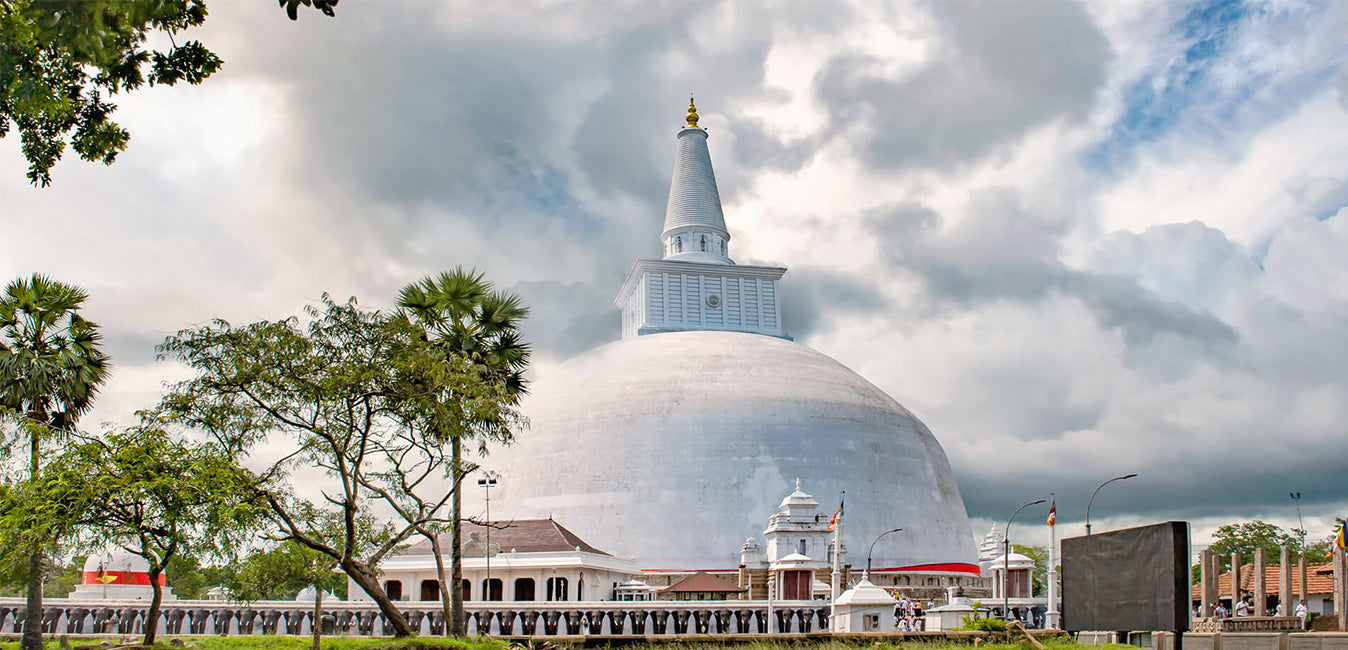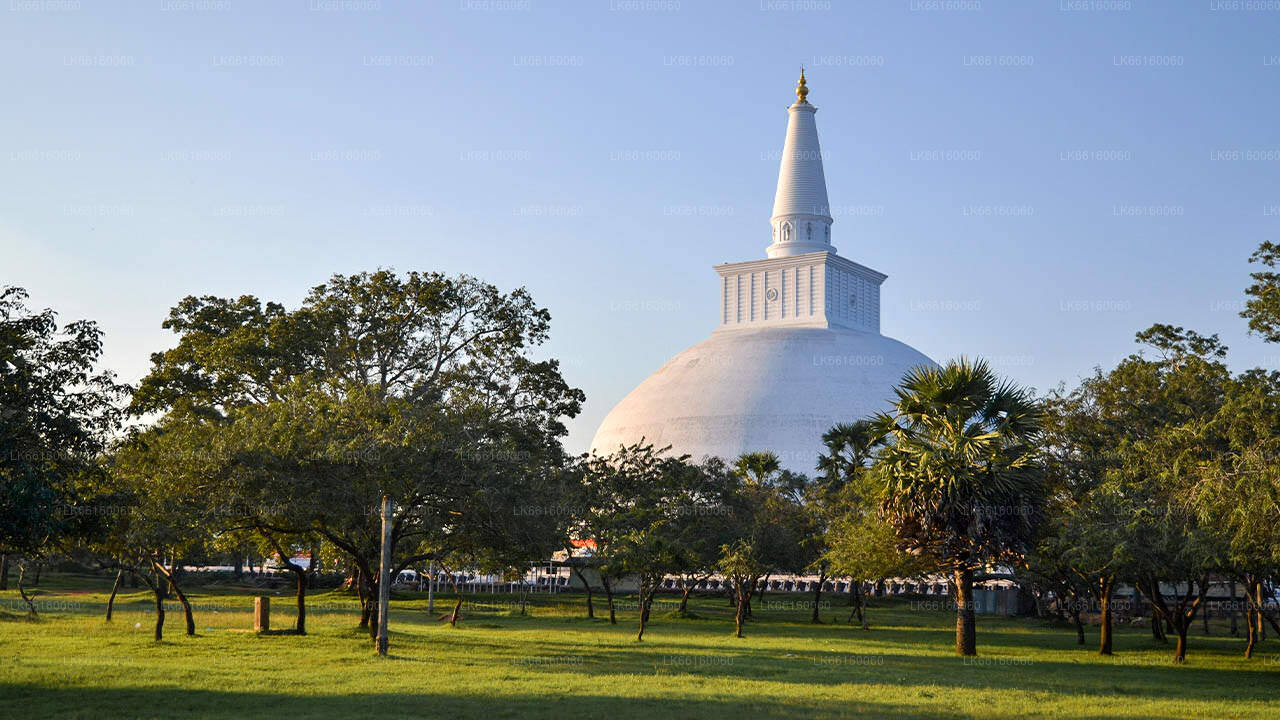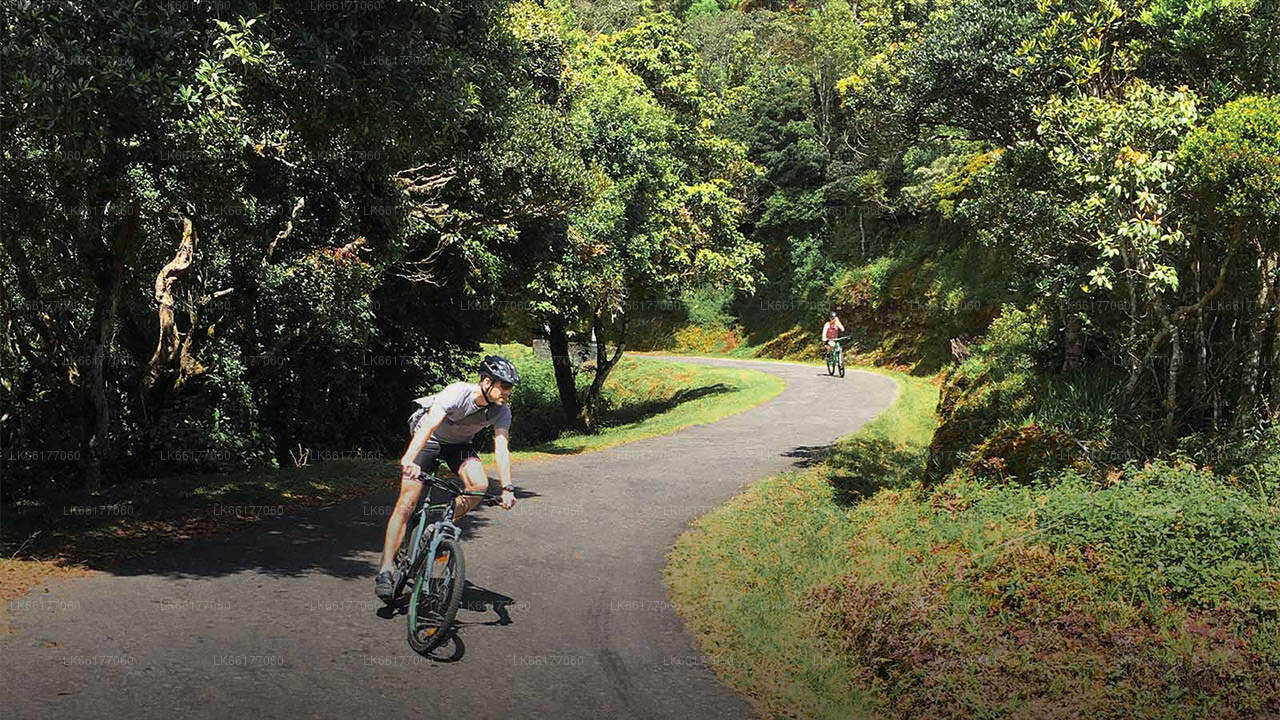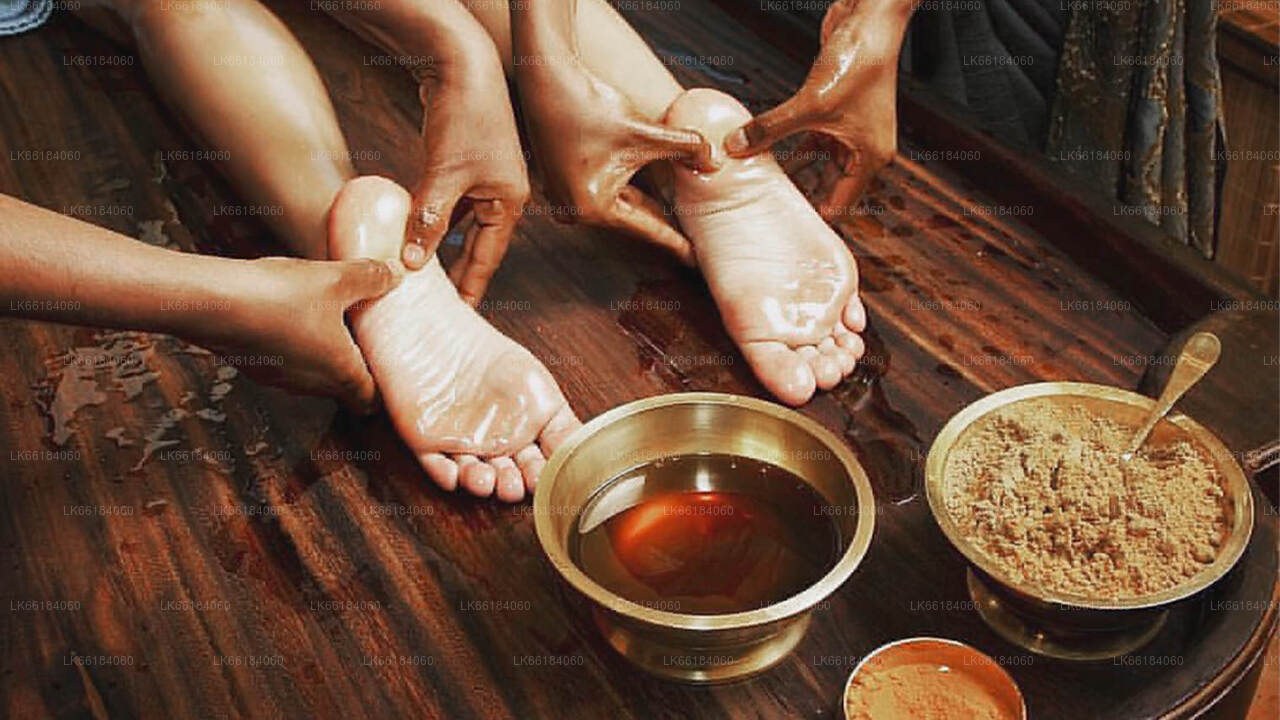
Anuradhapura stad
Anuradhapura tillhör North Central-provinsen i Sri Lanka. Anuradhapura är en av Sri Lankas antika huvudstäder och känd för sina välbevarade ruiner av den forntida lankesiska civilisationen. Staden, som nu är ett UNESCO-världsarv, ligger 205 km norr om den nuvarande huvudstaden Colombo i Sri Lanka.
Ritigala Archaeological complex
This site is the monastic complex on the lower slopes of Ritigala-kande – the Ritigala Mountain – situated in Sri Lanka’s North Central Province, 25 miles (40 kilometers) southeast of Anuradhapura. These ruins are some of the most distinctive the island has to offer. The Buddhist dagobas (domed relic chambers) and statuary of Anuradhapura and elsewhere are conspicuous by their absence.
The Archeological Site of Ritigala is situated at the eastern slopes of the Ritigala mountain range, the car park and entrance of the excavation site is 20 km to the northwest of Habarana by road. It can be reached from a turn-off at the Habarana-Anuradhapura Road (A11) at a distance of 12 km from Habarana. An 8.5 km along a graveled road leads to the car park of Ritigala at the foot of the mountain range. The distance from Anuradhapura New Town is 55 km, from Polonnaruwa Archeological Site 63 km, from Kandy 113 km, and from Trincomalee 105 km.
Attraction of Ritigala archaeological complex
The reservoir: the perimeter of this huge polygonal reservoir measures 366 meters. it is said to have been dug during the reign of King Pandukabhaya (437-367 BC). Because of its location even before the entrance to the monastery, its use would have been to allow pilgrims and visitors to perform a ritual bath before entering the premises. The reservoir is crossed by a river which supplied it with water. Visitors would walk along it clockwise and reach the other side of the river.
The hospital: among the remains still visible are those of an ancient hospital and facilities for making herbal medicines, a field in which the monks particularly excelled. We can still see a bathtub used for Ayurvedic baths, as well as stones used to reduce roots and herbs to powder.
The double platforms: about fifty terraces are visible in Ritigala. On each of them, a double platform was built. They were probably surmounted by buildings housing meditation cells and other spaces devoted to common rites and teachings. Each of these platforms is oriented east-west and a stone bridge connects each pair. These platforms are typical of forest hermitages like that of Ritigala.
The traffic circles: the paved path is crossed by traffic circles visible at each intersection. These are large slabs forming a circle from which two or more paths start.
Om Anuradhapura-distriktet
Anuradhapura tillhör North Central-provinsen i Sri Lanka. Anuradhapura är en av Sri Lankas antika huvudstäder och känd för sina välbevarade ruiner av den forntida lankesiska civilisationen. Staden, som nu finns med på UNESCOs världsarvslista, ligger 205 km norr om den nuvarande huvudstaden Colombo i Sri Lanka. I den heliga staden Anuradhapura och i närheten finns ett stort antal ruiner. Ruinerna består av tre typer av byggnader: dagobor, klosterbyggnader och pokuna (dammar). Staden hade några av de mest komplexa bevattningssystemen i den antika världen, belägna i landets torra zon och administrationen byggde många tankar för att bevattna marken. De flesta civila är singaleser, medan tamiler och srilankesiska morer bor i distriktet.
Om norra centrala provinsen
North Central-provinsen, som är den största provinsen i landet, täcker 16 % av landets totala landyta. North Central-provinsen består av två distrikt som heter Polonnaruwa och Anuradhapure. Anuradhapura är det största distriktet i Sri Lanka. Dess yta är 7 128 km². North Central-provinsen har många potentialer för investerare att starta sina företag, särskilt jordbruk, agrobaserade industrier och boskapssektorn. Mer än 65 % av North Central-provinsens befolkning är beroende av grundläggande jordbruk och agrobasindustrier. NCP kallas även "Wew Bendi Rajje" eftersom det finns mer än 3 000 medelstora och stora dammar i provinsen. Sri maha bodiya, Ruwanweli seya, Thuparama dageba, Abayagiri-klostret, Polonnaruwa Rankot wehera och Lankathilake är rädda.

















